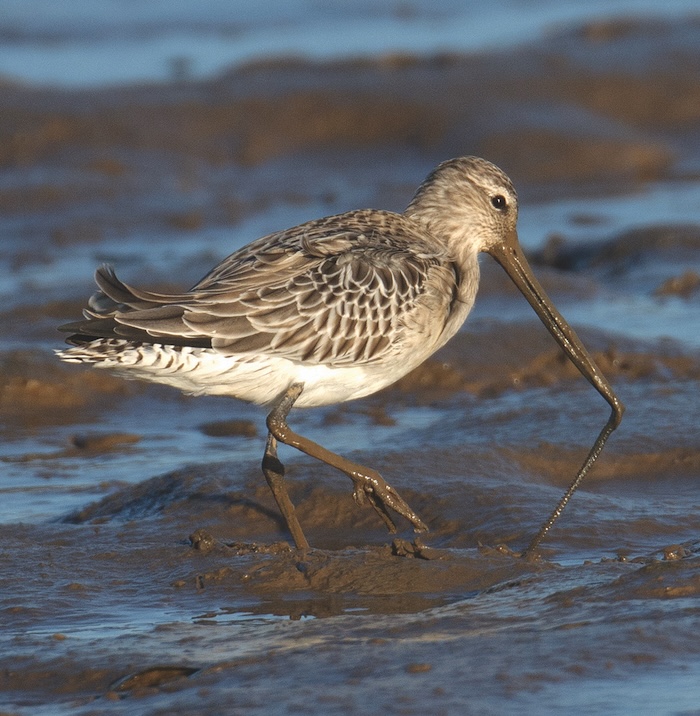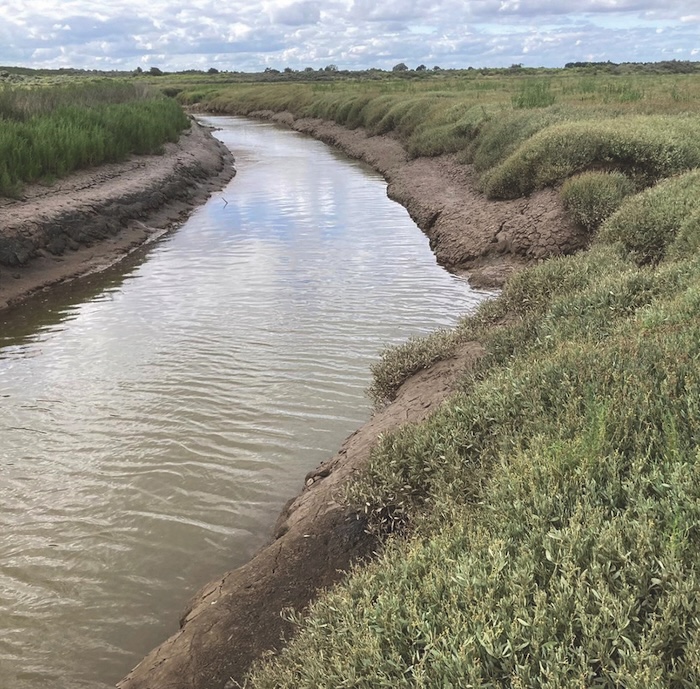
Mud, glorious mud
By Rachel Shaw
Lincolnshire Wildlife Trust
AS we head towards the winter months, I start to think about visiting the coast.
This may be contradictory to those who associate the coast with warm sunny days and ice cream but there’s something special about the Lincolnshire coast in winter.
Getting wrapped up warm and walking on the wide sandy beaches. Looking out over the expanse of saltmarsh and mudflat. We are fortunate to have a long stretch of open coast bordered by the two great estuaries of the Humber and The Wash. There are lots of places to explore and opportunities to see wildlife.
Look out for flocks of pink-footed geese arriving from their breeding grounds in the Arctic. Flying in their v-formation and chatting to one another in their high-pitched honking calls.
Flocks of waders gather on the mudflats of The Wash. It’s a meeting point for birds; dunlin from Scandinavia, knot from northern Canada, oystercatchers from Iceland and bar-tailed godwits from north-west Russia. They join local birds, bickering and jostling for space.
The sandy beaches attract the flocks of summer holiday-makers but for these birds, it’s the mud. It’s here where there are the best feeding opportunities. The mud is teeming with life and tiny invertebrates are on the menu.
Mud is a hard sell compared to leafy woodlands with ancient oak trees or a colourful tropical coral reef. But mud is important too and not only for wildlife. The muddy sediments on the fringes of the land and out to sea have another special feature that can benefit us all. The habitats of the seabed – mudflats, saltmarshes, seagrass meadows and kelp forests – capture and store carbon. How we treat them, could help us reach net-zero.
Last year in September, the first estimate of carbon stored in UK seabed habitats “The Blue Carbon Mapping Project” was published. The research, by the Scottish Association for Marine Science and funded by WWF, The Wildlife Trusts and the RSPB, revealed the top 10cm of seabed habitats in the UK stores 244 million tonnes of organic carbon.
Mud is the real super-storage facility with 98% of that carbon stored in seabed sediments such as mud and silt. And it goes much deeper than 10cm. Looking down into the Main Creek from the bridge at Gibraltar Point indicates the depth of muddy sediment beneath the carpet of saltmarsh plants. Out in the North Sea, it will be much deeper. The first 10cm is just the tip of a muddy iceberg that contains millennia’s worth of carbon.
Apart from that it’s a ridiculously huge amount, I find the figure of 244 tonnes impossible to comprehend. What I do know is that keeping this carbon where it is…is vital. The biggest threats these carbon stores are activities that disturb the seabed. Disturbance can release carbon – worsening climate change – as well as harming marine wildlife.
Protecting the seabed and strategic planning activities in UK seas will keep the carbon locked away. Restoring habitats such as seagrass beds and saltmarsh will increase the capacity to store more carbon.
But perhaps the first step is recognising the importance of these seabed habitats and that mud really is glorious.
Top Image - Oystercatcher by Chris Comersall 2020VISION

Pink-footed geese by David Tipling 2020VISION

Bar-tailed godwit by Chris Comersall 2020VISION

The creek at Gibraltar Point by Jim Shaw
